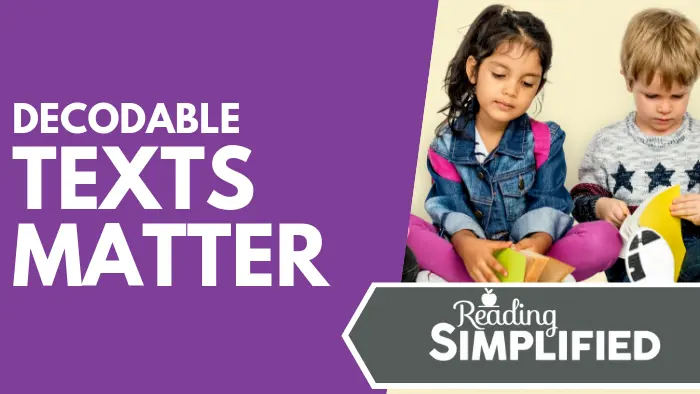
A battle is waging...again...about the types of texts that beginning or struggling readers need in order to become fluent. Some urge teachers to begin with predictable texts. Others stress the importance of decodable texts.
This quibbling is actually no small matter!
The texts we ask our students to read--as they discover how print works--makes a heap of difference, and yet the importance of decodable texts is often overlooked.
In this article, we investigate why decodable texts matter for early readers and why they have such a huge impact when it comes to developing strong sound-based decoding skills.
(To watch the video where I discuss why decodable texts are so important in more detail, hit play below or read on for a detailed overview)
What is a decodable text?
A decodable text refers to a text that contains words that include the phonetic code that the student is already familiar with. In other words, a decodable text matches the level of the student’s ability to decode them from a sound-based decoding approach.
Why should beginners or struggling readers read a decodable text?
A study by Cheatham & Allor found that decodability is a “critical characteristic of early reading text.” Decodable text increases the chances that students will depend on a decoding strategy rather than a visual-only, rhyming, or guessing approach to read words.
If a child reads a rhyming text with words like “fat, cat…,” the student can use rhyme to figure out that the next word is “pat.” (And perhaps never notice the inside-parts of the the word, "pat.")
This is a problem because the student isn’t blending the sounds of the word to read the word. She won't crack our written code if she doesn't every really notice each individual letter-sound in a word. To understand how our code functions, the student must use her phonological processing skills with print. In other words, she must practice attacking unknown words by matching symbol to sound.
In contrast, with a mostly decodable text such as, "The man is on his hat," the new reader will more likely to recognize the phonics information (i.e., "m" = /m/) and blend the sounds together (i.e., /mmmmma--nnn/ = /man!/ to attempt the unknown word. In doing this, she is making mental linkages between sound and symbol that will make the word automatically recognizable next time--or in future exposures.
To become a good reader, a student must be able 1) to recognize letter-sounds and 2) to blend the sounds to recognize unknown words. We recommend using the Blend As You Read strategy rather than less reliable strategies to ensure that this decoding process works well.
If you want to learn more about the Blend As You Read strategy and the key activities that can help students improve their sound-based decoding skills rapidly, visit readingsimplified.com/start-here/
It's in the context of a decodable book that students who are prepared well are most likely to discover how to read words more quickly.
The Relationship Between the Alphabetic Principle & Strong Sound-Based Decoding
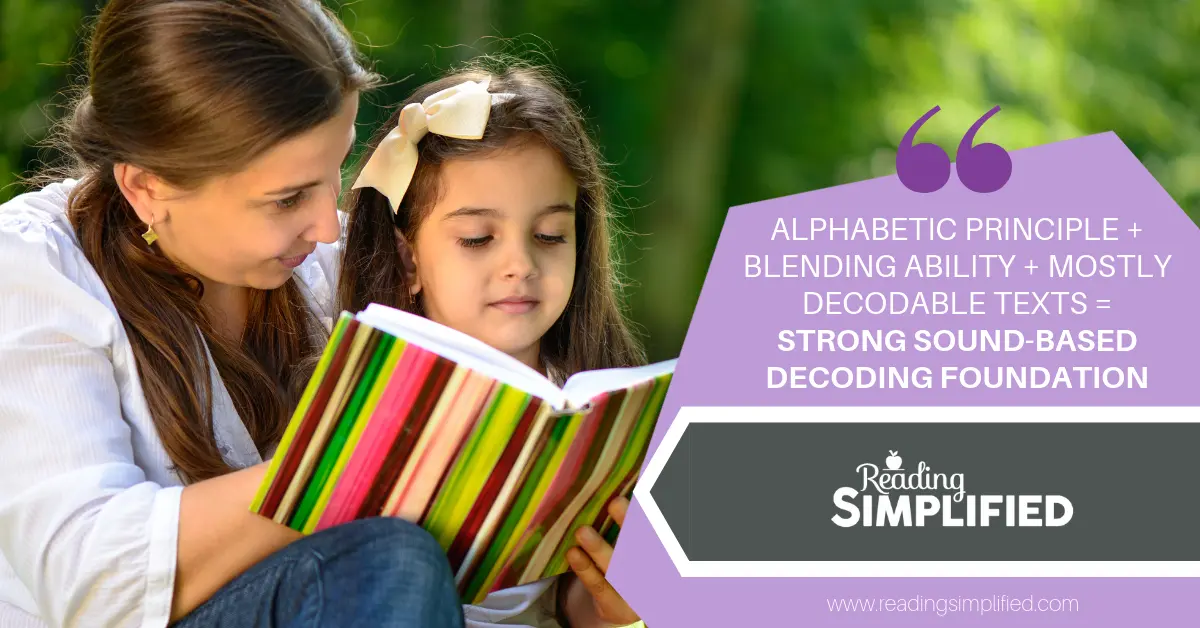
When kids try to read a book for the first time, they don’t know how the written code works. It’s up to us, as teachers, tutors or parents, to pass along the truth that our language is a code for sounds. This insight is the concept of the alphabetic principle, which is the idea that the written language (i.e., letters and letter patterns) represents sounds in spoken language.
Understanding this relationship between letters and sounds is vital for developing sound-based decoding and reading skills.
So, where’s the best place for beginners or struggling readers to practice this concept about how our code works?
Most likely, the answer lies with a text that doesn’t contain a lot of complicated words.
An example decodable text for early readers
If you’re working with a beginning reader, consider mostly decodable texts such as A Pig, a Fox, and a Box by Jonathan Fenske. It includes simple phrases such as “I am Fox,” and “I like to play,” etc.
A decodable text like this is ideal for beginners because it helps them practice and develop the skills they need to decode correctly. A text that controls the types of words utilizes and provides mostly letter-sounds that the student may have learned are good initially. For early readers, a text with three-sound words is much more suitable than, say, a passage with several 5- or 6-sound words or multisyllable words.
A Pig, a Fox, and a Box targets just a few short vowel sounds, which provides a gentle introduction to how our written code works. For beginners, look for similar texts that are mostly decodable so that kids are set with a strong sound-based decoding foundation.
The problem with predictable texts…
Many kids start their reading journey with predictable or patterned text. An example of this would be something like,
I am a fox.
I am a bear.
I am a dog.
I am a rat...etc.
In cases like this, most of the text on the page will repeat a similar pattern with a small change to each sentence. Usually, this change is represented by an image.
Predictable texts are great for establishing context to help non-readers guess unknown words. However, they're NOT great for teaching phonics, decoding, or the alphabetic principle. The problem is that, instead of decoding the words on the page, the student is more inclined to make a guess based on the picture and other features of the text.
This leads to the student picking up other strategies to figure out the words, and, a lot of the time, the strategy is based on memorizing the way words look only without connecting sounds to symbols.
Students sent down this path often bounce their eyes around the page as they try to use context and only partial decoding skills to guess what makes sense. They do NOT fix their eyes intently on the letter-sounds that comprise each word.
In a world of predictable texts, students like this may appear to be advancing for awhile. They may even learn a large bank of high frequency words which also gives the appearance that they are on the right path.
But, what happens when the pictures are removed? Or, when the child attempts to read a non-predictable text?
Most often, the student is left confused and struggles to get the words right because s/he hasn't worked on building a strong sound-based decoding foundation.
The Importance of Phonics Instruction & Texts
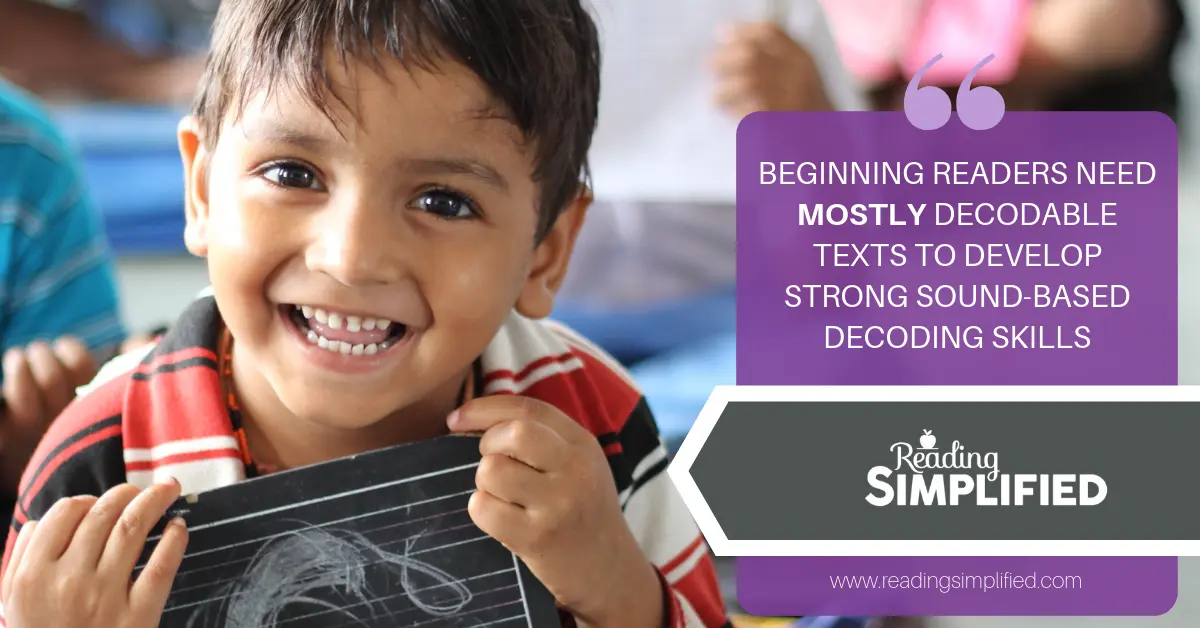
It's a challenge to reinforce phonics knowledge in the context of predictable texts because they usually include so few opportunities to practice a given sound or sounds.
Decodable texts, on the other hand, often target a phonics pattern or two, which means that students are more likely to put their decoding skills into practice. It doesn’t use the same pattern throughout so that the reader will have to look at each of the words more carefully and work a little harder to figure it out.
A study carried out by Mesmer in 2005, that investigated the effects of highly decodable texts and coordinated phonics instruction, had some fascinating results. The study showed that
“Readers with the knowledge of the alphabetic principle, given the same phonics instruction, will apply it more (and with more accuracy and independence) in a highly decodable context.”
Good readers don’t rely on memory of the visual-only appearance of words. They read words from a sound-based approach. And then, over time establish automatic recognition of more and more words built on the sound-based decoding foundation.
Using mostly decodable texts means using texts that allow students to decode many words that are aligned with what they have already learned, as well as attempt occasional words with patterns they have not been explicitly taught. This combination of mostly-taught and some-not-taught helps develop the reader's cognitive flexibility in playing with sounds in unknown words.
"Is this word ('cow') /coa/ or /cow/?
Hmmmm....
Must be /cow/."
If you want to geek out about this a little more, I suggest you indulge in some further reading of David L. Share’s “Self-Teaching Hypothesis,” which explores how students with sufficient sound-based decoding skill deduce the rest of the code, over time and bit-by-bit, as they attempt to read more and more advanced words.
You don’t have to use decodable texts with your students forever, of course. If you’re implementing the principles we use here at Reading Simplified, many of your kiddos will learn the code in about 12 weeks. Of course, some will take much longer, but we find most students can learn the sufficient amount of phonics information David Share alludes to, to be able to advance into more authentic, natural texts, such as Henry and Mudge or Jada Jones Rock Star.
You can find out more about the Reading Simplified Academy, where you’ll receive ongoing support and resources to help streamline your students’ reading achievement, here.
If you’d like to grab your FREE exercise in analyzing decodable texts (retrieved from the Reading Simplified Academy archives), leave your name and email address below, and you’ll receive the complete exercise I introduced above with A Pig, a Fox, and a Box, delivered to you as a downloadable PDF.

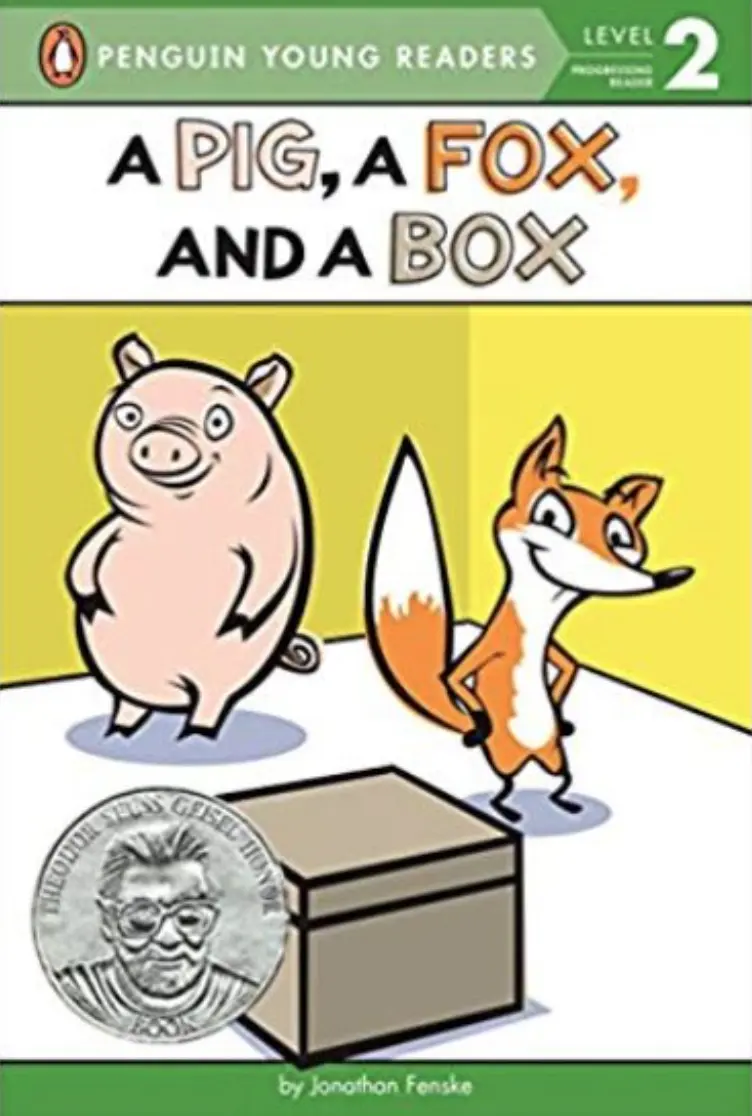
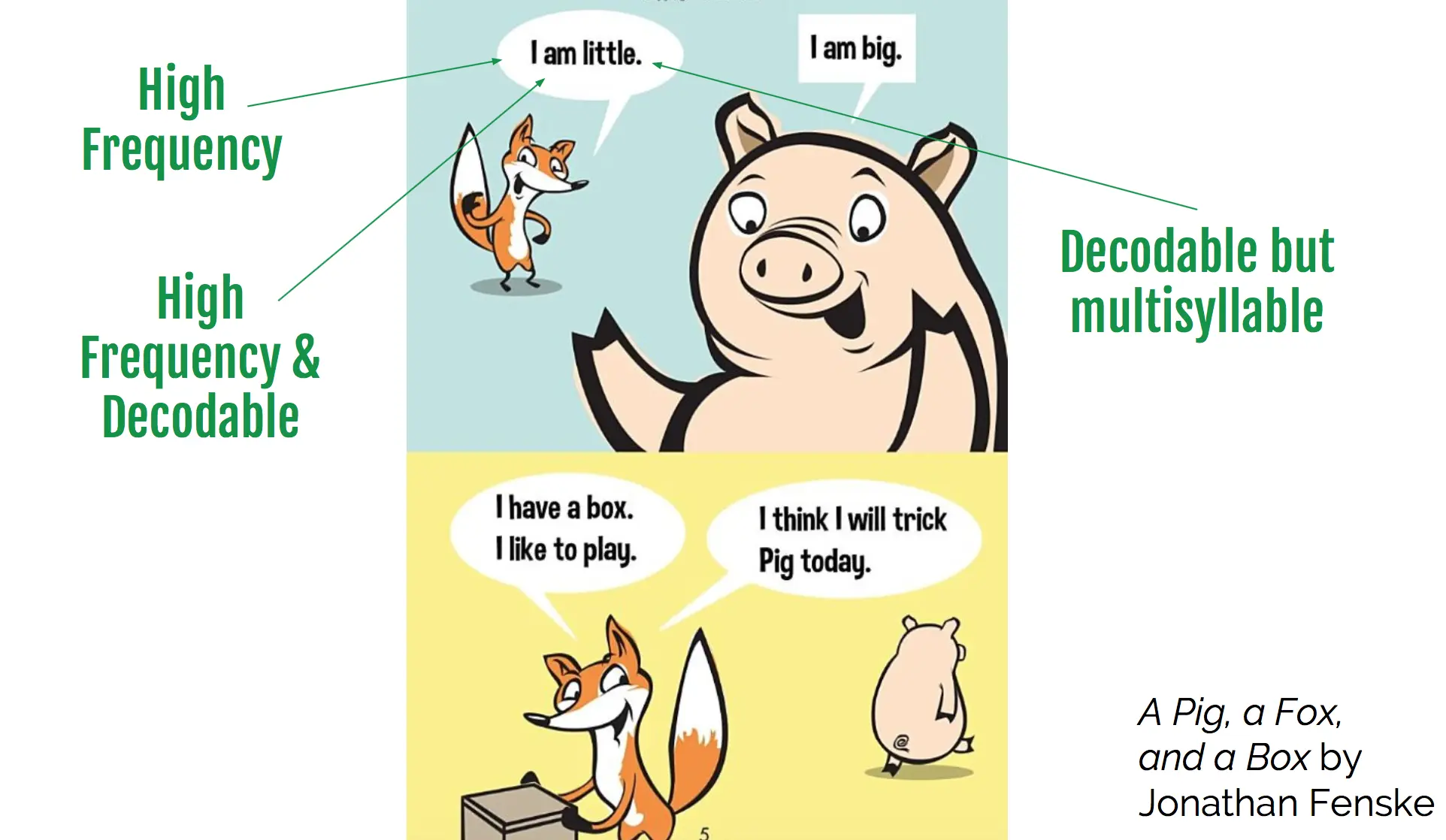

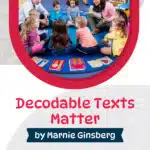

My students love A Pig, a Fox, and a Box!
Yes! Thanks for letting us know, Marya.
I am excited to get more resources for my students who really want to read more in context. Thank you!
Wonderful, Amy! Thanks so much!
Do you have any more decodable reader book suggestions?
Yes! Check this out: https://readingsimplified.com/decodable-texts-booklist/